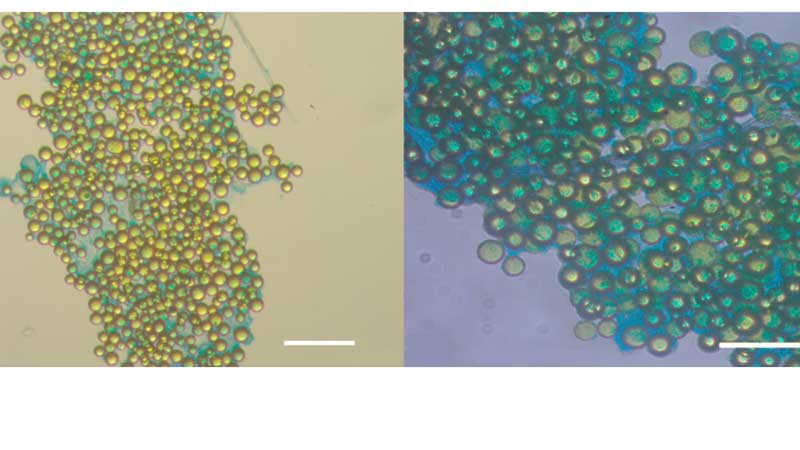Published:

Natural materials excreted by bacteria are gluing micro and nano plastics together so that they form larger masses in our oceans, scientists have discovered.
The biopolymers are common across all freshwater and marine environments, but until now scientists did not know what effects these sticky, glue-like materials had on the nano and microplastics that are now ubiquitous in all our waters.
As part of RealRiskNano, the £1.1 million project funded by the Natural Environment Research Council (NERC), scientists from Heriot-Watt University used natural waters, collected from the Faroe-Shetland Channel and the Firth of Forth, to perform various experiments in an attempt to understand the behaviour of micro- and nano-plastics in the marine environment.
The scientists added plastics to seawater and incubated them in conditions that simulated the ocean surface. Within minutes, they grouped together with bacteria, algae and other organic particles.
Research like this is beginning to fill the gaps in scientists' knowledge, but we need more evidence in order to prioritise and manage plastic pollution effectively.
The team was surprised to find that large masses of biopolymers, glue-like substances produced and excreted by microorganisms, formed the bulk of these plastic agglomerates.
Dr Stephen Summers, a research fellow at Nanyang Technical University in Singapore said: “This is a first step towards understanding how nanoplastics interact with natural biopolymers throughout the world's oceans. This is very important, as it is at this small scale that much of the world's biogeochemistry occurs.
“We found that the biopolymers envelope or engulf the nanoplastic particles, which caused the plastics to agglomerate into clumps.
“The nanoplastics, which are 100-200 times smaller than a bacterial cell, were actually incorporated into the agglomerates, which became visible to the naked eye in our lab experiments.
“The fact that these agglomerates become large enough to see raises concern, as they are likely to be seen as a food source by small marine animals.”
The scientists have raised concern about the potential impacts of this agglomeration on the deep sea and geochemical cycles, like the flow of food from surface to seafloor.
Dr Tony Gutierrez, the microbial ecologist at Heriot-Watt University in Edinburgh who led the study, said: “The agglomerates form in something similar to marine snow, the shower of organic detritus that carries carbon and nutrients from the surface to the ocean floor and feeds deep-sea ecosystems.
“It will be interesting to understand if nano- and micro-scale plastics of different densities could affect the food flux from the upper to lower reaches of the ocean.
“Heavier plastics could drive marine snow to fall at a faster rate to the sea floor, while the opposite could happen with lighter forms of plastics in making it more buoyant and to fall more slowly. In that case, deep-sea ecosystems could become starved of food.
“To understand this scenario, we need data on how abundant these invisible plastics are in the ocean.”
The team is clear that this discovery isn't necessarily bad news.
Professor Ted Henry, also from Heriot-Watt University and leader of the NERC RealRiskNano project, said: “The discovery and characterisation of nano and microplastic agglomerates increases our understanding of how these particles behave within the environment and how they interact with marine organisms. The agglomerates are much more complex than simple pieces of plastic.
“Research like this is beginning to fill the gaps in scientists' knowledge, but we need more evidence in order to prioritise and manage plastic pollution effectively.”
The NERC RealRiskNano project involves researchers from Heriot-Watt University and Plymouth University, and the research was published in the Marine Pollution Bulletin. For more information, visit https://epaquatic.org/realrisknano/.